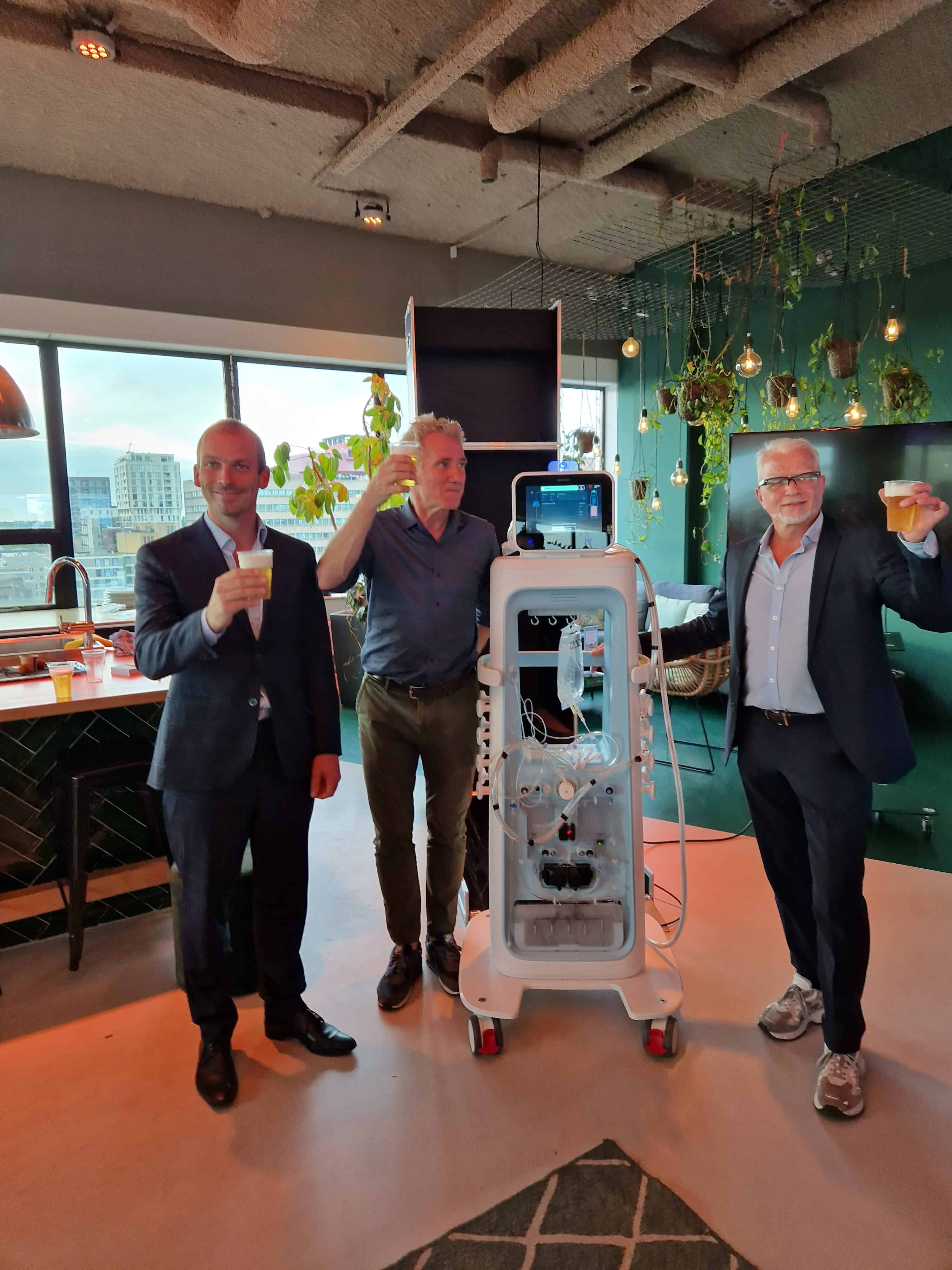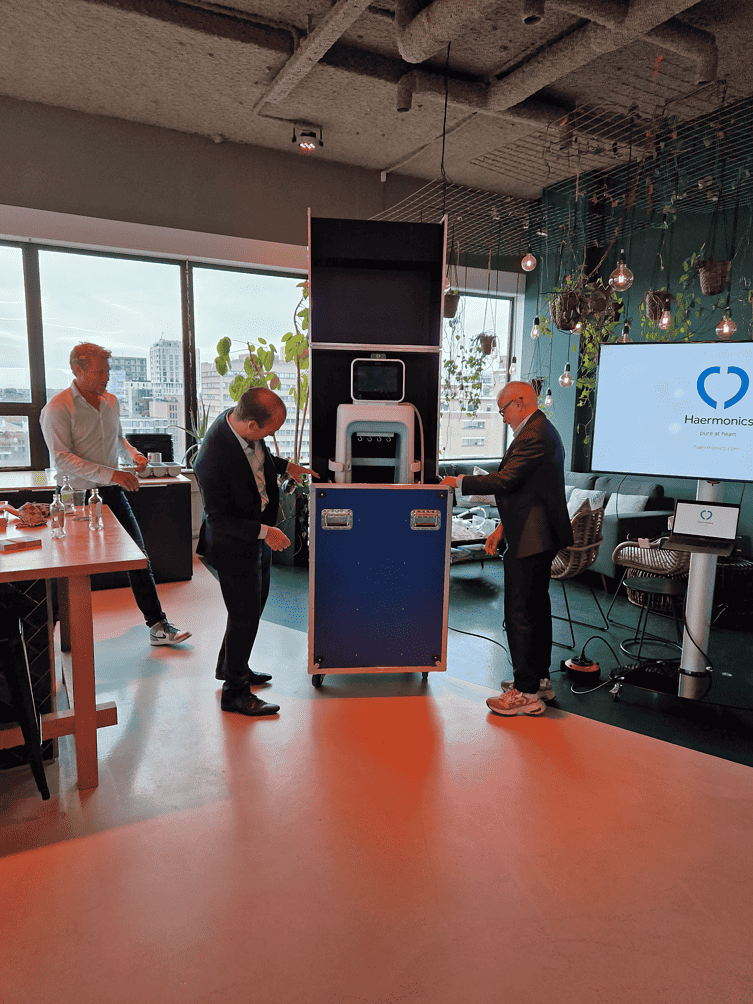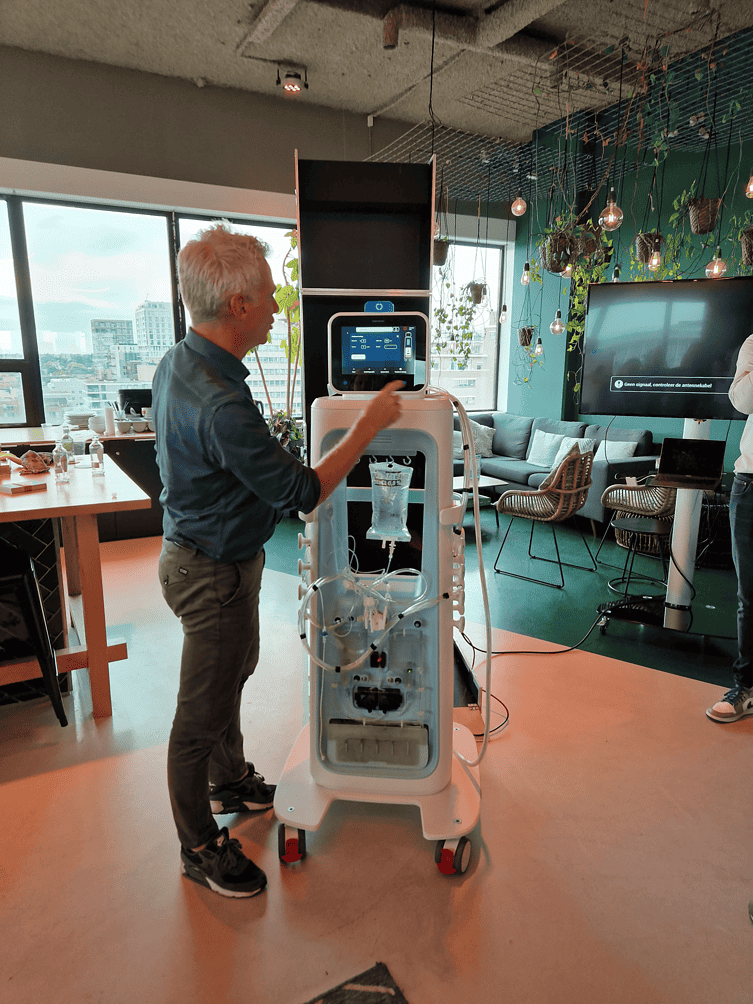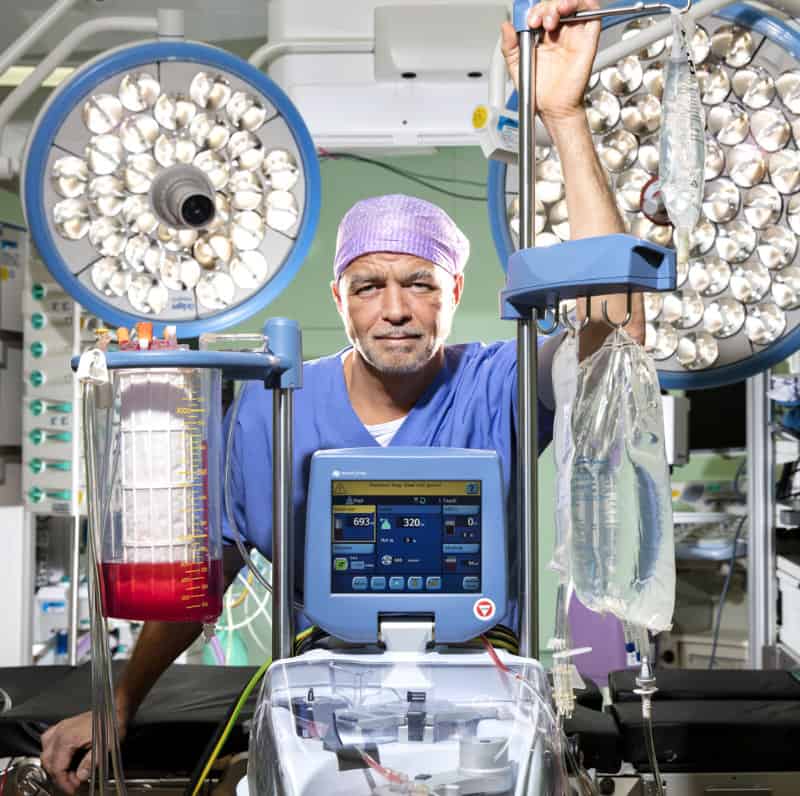
“I have been thinking about a device like this one for 30 years, since my training days, today is a very special day for me,” states David R. Koolbergen, looking at the device he had thought about for decades. He is a heart surgeon at Amsterdam Univerisity Medical Center and, most importantly, the founder of Haermonics, an Eindhoven-based MedTech company.
- Haermonics Pure is a device that flushes the chest cavities of heart surgery patients.
- The device prevents complications from happening and gives doctors decision-making tools.
- The company will now apply for European and American medical certifications.
The company launched Haermonics Pure, a medical device that self-flushes the chest cavity of patients who underwent heart surgery, preventing complications. Such knottinesses are behind 250 deaths worldwide every day. Following the intervention, residual blood or clots obstruct the pericardial space and the drainages, potentially leading to a second surgery to be dealt with. Yet, washing the chest cavity with warm saline is enough to prevent dangerous complications – like tamponade – and that’s what Haermonics Pure does.
Although it was an over three decades old idea, its realization had to wait long years. Haermonics is an eight-year-old company that had to survive several valleys of death – as Koolbergen likes to call them – with more to come, as it is set to apply for CE marking and to raise funds to continue its mission.
Doctors in full control
Eindhoven’s Microlab’s sky bar is the presentation’s venue. Out of a bulky sky-blue box comes Pure, unpacked by Haermonics CEO Wouter Markus and the city of Eindhoven’s alderman for the economy, Stijn Steenbakkers. The device, with round shapes and white and light blue colors, takes the center of the stage, welcomed by rounds of applause and a symbolic toast.
Besides preventing complications, the device also gives an accurate overview of what is going on in the patient’s body. Current practices see nurses kneeling beside the bedside to check blood loss every 15 minutes. This praxis is inaccurate as the nurse might simply need to check on someone else. “Moreover, drainage systems do not work well in 30 percent of the patients. If any other device in the hospital has a comparable failing rate, it would be banned. But that is not the case for this stupid pot, invented in 1875, which has not changed ever since,” underlines Koolbergen.


With Pure, Haermonics wants to give doctors a decision-making tool. By having knowledge of what the exact blood loss is, surgeons can decide whether or not a second operation is needed within the first four hours. This span of time after the first surgery makes the difference, as, in the event of a wound reopening, there is less harm for the patient, too. Avoiding a second operation means relieving people from excessive trauma – thus allowing them to get healthier faster – and reducing hospital costs.
Will to innovate
Despite noticing that the solution to the problem was simple, Koolbergen did not initially find a fertile ground to test his ideas. “Thinking about ways to improve the practice and bring down mortality rates was not the priority at that time,” he recalls. Years later, he got the green light from the head of its department to start testing, “but nobody has to know,” as Koolbergen’s boss told when starting the first trials.
Things changed in the course of the years. “Unnecessary risk is no longer tolerated, and young people want to innovate,” adds Koolbergen. Eindhoven lives up to its name of an innovation city, with Markus stressing that the idea behind Pure was born in Amsterdam, but the company had to move to Lighttown to make it a reality.
Steenbakkers could not ask for anything better. “In this city, real solutions for big societal challenges are developed, where 30 percent of the private money financing R&D is spent. We need technologies like this to keep health affordable and with high quality in the future,” he said.

Magical feeling
For Haermonics’ CEO Wouter Markus, pride is the key feeling of the day. He is proud to see the device in real life, of his team’s work, and of the journey the company had to endure. That is the key message he conveys. Looking back at the past months, he thanks partners like DEMCON, who completed the assignment of designing and constructing the device in less than a year.
It was a collaborative effort, with medical trials in between, financing rounds, and hiccups. All for a higher motivation. “The moment you realize that you are saving lives and that it is happening, that it is true, that does give you an extra drive. It is a magical feeling because the patient’s heart starts beating again. That is when you understand that you are not pushing the buttons of a toy,” Markus underlines.
Haermonics Pure is already packing. It will be on show at the upcoming European Association for Cardio-Thoracic Surgery (EACTS) annual meeting happening in Vienna. There, other doctors have the chance to see and feel the device.

Wider impact
Having funding rounds and medical certification approvals in sight, both Koolbergen and Markus do not forget the real mission, confident of the impact their technology can have. “As a surgeon, I prolong and improve patients’ lives. But if this works, and if it reaches all of Europe and of the world, my impact will be a thousandfold or a ten thousandfold,” states Koolbergen.
Despite being a businessman – having previously founded other startups – Markus does not see the exit as the goal. “There are many more opportunities out there. Today, we are flushing with warm saline, but tomorrow, we could flush with medicines. There are many other complications to look at, in the heart and other parts of the body. This is only the first step,” he concludes.







